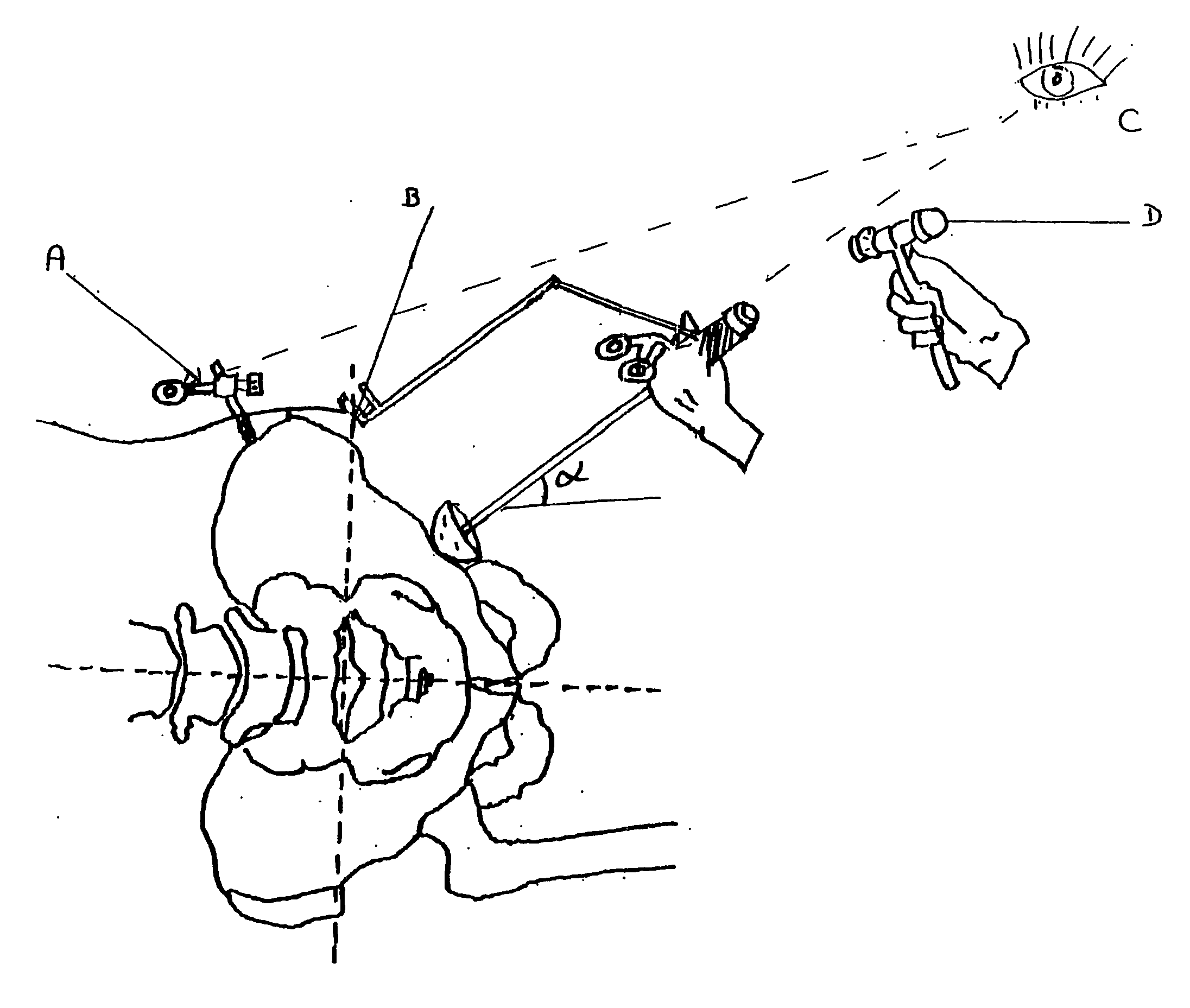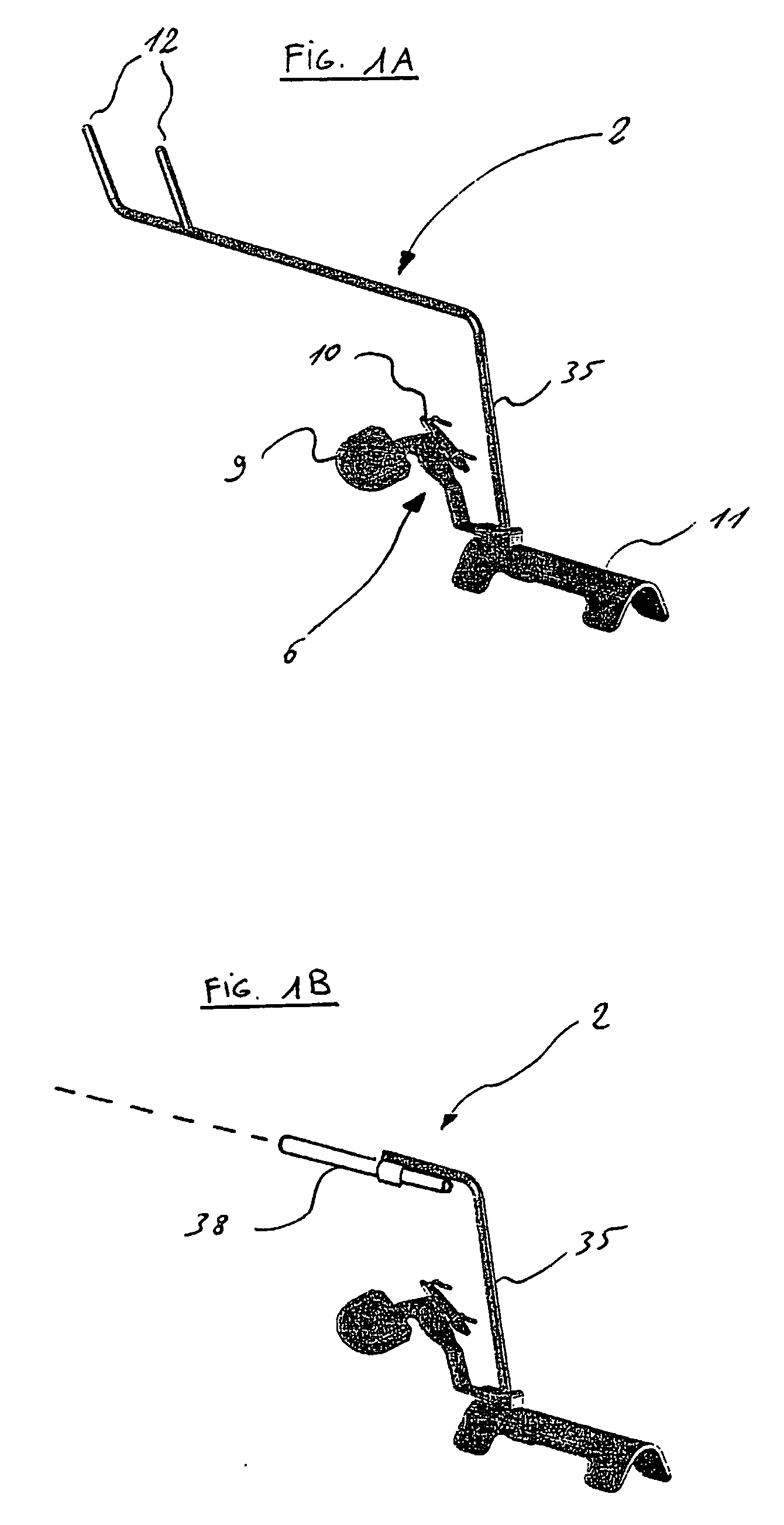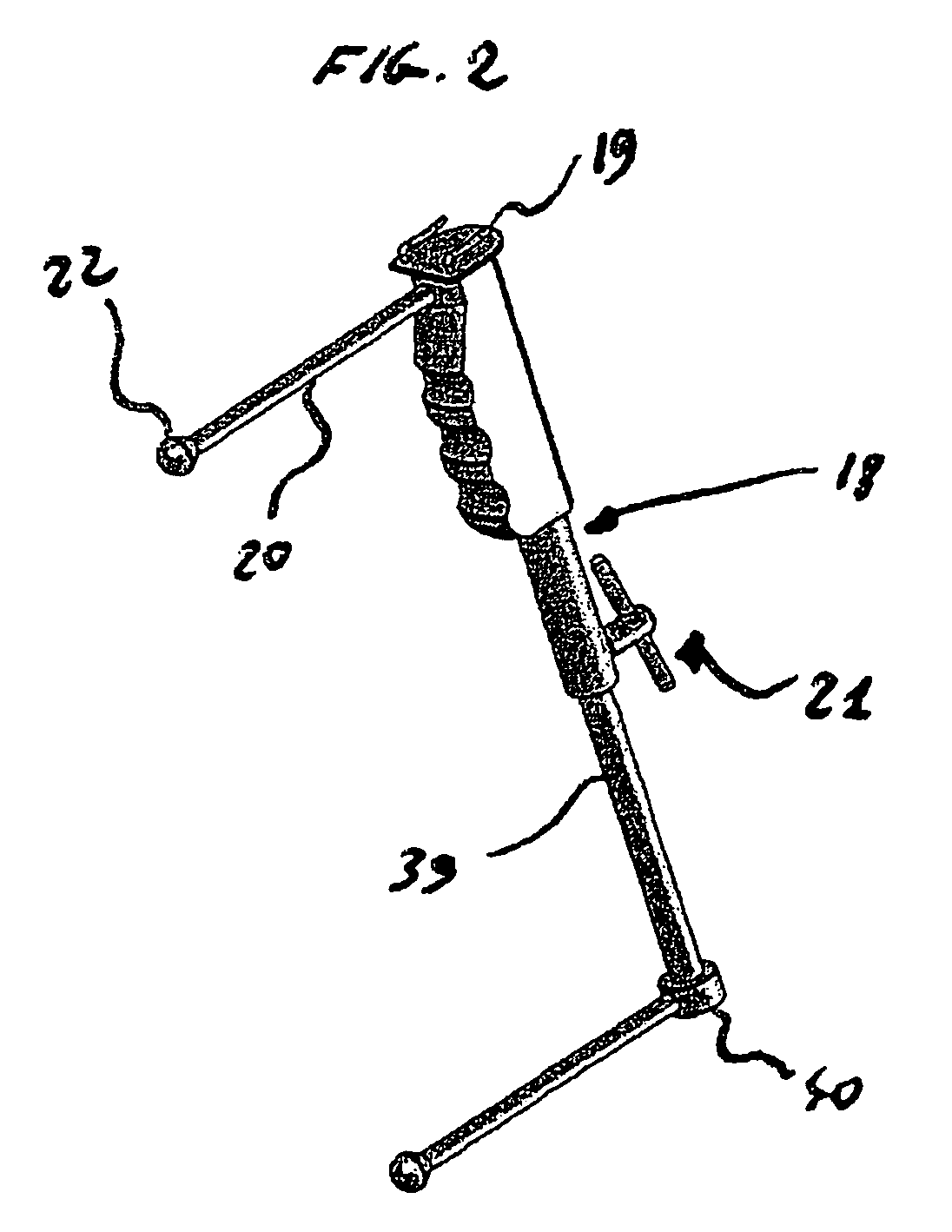Orientation device for surgical implement
a technology of orientation device and surgical implement, which is applied in the field of surgical operations, can solve the problems of insufficient present techniques, less developed techniques designed to improve them, and complicated orientation of the acetabular component, so as to facilitate and improve the training of surgeons, improve patient positioning, and increase objectivity
- Summary
- Abstract
- Description
- Claims
- Application Information
AI Technical Summary
Benefits of technology
Problems solved by technology
Method used
Image
Examples
Embodiment Construction
[0057] The invention will be discussed in a more detailed way here below. To this effect some examples, together with corresponding drawings, will be used.
[0058]FIG. 1A shows an embodiment of a guide according to the invention.
[0059]FIG. 1B shows an alternate embodiment of the guide, with a laser pointer.
[0060]FIG. 2 shows a pelvic positioner
[0061]FIG. 3 shows the pelvic positioner of FIG. 2 from above with a bubble level.
[0062]FIG. 4 shows the pelvic positioner of FIG. 2 being placed close to a pelvis.
[0063]FIG. 5 shows the guide of FIG. 1 in use.
[0064]FIG. 6 is an enlarged view of the guide of FIG. 1 in use.
[0065]FIG. 7 illustrates the different operating actions when using the guide of FIG. 1.
[0066]FIG. 8 is an exploded view of a calibrating apparatus.
[0067]FIG. 9 shows the calibrating apparatus of FIG. 8 in use with the guide of FIG. 1. FIG. 10 shows a pelvic orientation witness without its bubble level.
[0068]FIG. 11 shows a pelvic orientation witness linked to a pelv...
PUM
 Login to View More
Login to View More Abstract
Description
Claims
Application Information
 Login to View More
Login to View More - R&D
- Intellectual Property
- Life Sciences
- Materials
- Tech Scout
- Unparalleled Data Quality
- Higher Quality Content
- 60% Fewer Hallucinations
Browse by: Latest US Patents, China's latest patents, Technical Efficacy Thesaurus, Application Domain, Technology Topic, Popular Technical Reports.
© 2025 PatSnap. All rights reserved.Legal|Privacy policy|Modern Slavery Act Transparency Statement|Sitemap|About US| Contact US: help@patsnap.com



